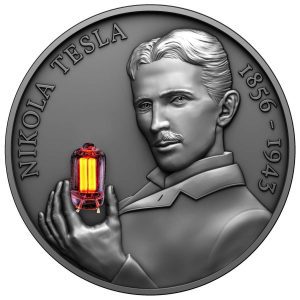Gold, in its pure form, is not magnetic. It doesn’t get attracted to magnets or show any magnetic properties and has a diamagnetic property which means it is repelled by a magnetic field.
This is because it lacks unpaired electrons in its atomic structure, unlike metals like iron or nickel which are magnetic. Even though gold nanoparticles on a very tiny scale can exhibit a weak attraction to magnets, pure gold itself remains non-magnetic.

Magnetic Impurities in Gold
As pure gold is non-magnetic, but it is important to acknowledge that it can occasionally contain magnetic impurities. These impurities, such as iron or nickel, can be introduced during the mining or refining processes.
Small traces of these magnetic elements can be present in gold due to the geological environment or the equipment used during extraction and processing.
Even when gold has these impurities, it remains non-magnetic. The magnetic properties of gold are very weak, and the impurities are present in such small amounts that they don’t affect the overall it’s behavior. Trustworthy gold refiners take steps to remove these impurities and ensure that the final gold product remains non-magnetic.
Common Misconceptions about Gold and Magnetism
People have developed many wrong ideas about gold and how it behaves around magnets. It’s important to clear up these misunderstandings and give correct information. Let’s look at some common misconceptions about gold and magnetism and explain the truth behind them:
All gold is magnetic (common misconception)
Fact: Pure gold is not magnetic. Unlike iron or nickel, it doesn’t have the right structure to be magnetic. It lacks the necessary electrons to create a magnetic field.
Gold can be attracted to magnets (misconception)
Fact: Gold repels magnets weakly. It’s called diamagnetic. It doesn’t get pulled towards magnets like some metals do.
All gold alloys are magnetic (misconception)
Fact: Gold alloys can have slight magnetic properties. It depends on the other metals mixed with gold. Alloys like white gold or rose gold may contain magnetic metals, but the magnetic effect is usually very weak.
Gold’s non-magnetic nature makes it less valuable (misconception)
Fact: Gold’s value doesn’t depend on its magnetic properties. Gold is highly valuable because it’s rare, beautiful, and has many practical uses. Its non-magnetic nature is even useful in making sensitive instruments like magnetic field sensors.
Does Gold Stick to a Magnet?
Pur Gold does not stick to magnets. This is because it is classified as a diamagnetic material, which means it has a weak magnetic response when exposed to a magnetic field. The electronic structure and arrangement of electrons in gold contribute to its diamagnetic properties.
One way to test if a piece of gold jewelry is pure or alloyed is by using a magnet. Pure gold will not be attracted to the magnet and will not stick to it. On the other hand, if it is alloyed with magnetic metals, it may exhibit magnetic properties and stick to the magnet.
Gold Plated vs Real Gold
The main differences between gold-plated and real (solid) gold jewelry lie in their composition, durability, and magnetic properties:
Composition
- Gold-plated jewelry consists of a base metal (such as copper or silver) with a thin layer of gold electroplated onto the surface. The gold content is usually 14k or 18k.
- Real gold jewelry is made entirely of solid gold, with no base metal core. The gold content is denoted by a karat number (9k, 14k, 18k, 24k) indicating the percentage of pure gold.
Durability
- Gold plating can wear off over time with regular wear, especially with exposure to moisture, sweat, lotions, and friction. The base metal may then become exposed.
- Pure gold jewelry is highly durable and will not wear away like plated jewelry. It can be melted down and reused many times.
Magnetic Properties
- Gold-plated jewelry may exhibit some magnetic properties due to the base metal core. Pure gold is not magnetic.
- Real solid gold is diamagnetic, meaning it is slightly repelled by a magnetic field. It does not attract magnets
Is Magnetism a Good Test for Gold?
Magnetism is not a reliable test for determining the authenticity of gold. While gold is not magnetic, certain factors can affect the results of a magnet test. Here’s why:
Fake gold is usually made with metals like copper, which are not magnetic. As a result, it may not stick to a magnet. However, it’s important to note that the magnet test alone is not enough to determine if gold is genuine or not.
Sometimes, real gold jewelry can have magnetic clasps, springs, or other components that can be attracted to a magnet. This can give a misleading impression that the gold itself is fake. Therefore, relying merely on the magnet test may lead to incorrect conclusions about the authenticity of gold.
Limitations of Magnet Test
Although the magnet test is commonly used as a quick and simple method to test the authenticity of gold, it has limitations. Some base metals that can be mixed with gold, such as iron or cobalt, are magnetic. If it is mixed with these magnetic metals, the magnet test may give a false positive result, leading to the misconception that the gold is genuine.
Alternative Testing Methods
To accurately determine the authenticity of gold, it is recommended to use more reliable testing methods. Two commonly used methods are the acid test and electronic gold testing.
Acid Test: The acid test involves applying a small amount of acid to the gold and observing the reaction. Genuine gold will not react to the acid, while other metals will show a reaction.
Electronic Gold Testing: Electronic testers use electrical conductivity to determine the purity of gold. These devices apply an electrical charge to the gold and measure its response, providing a more accurate assessment of its authenticity





